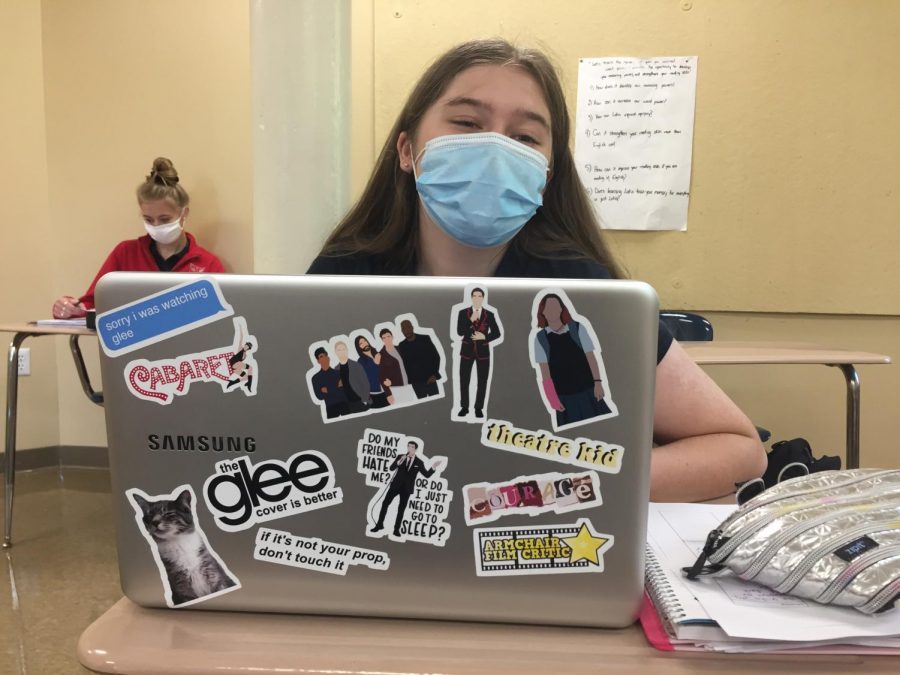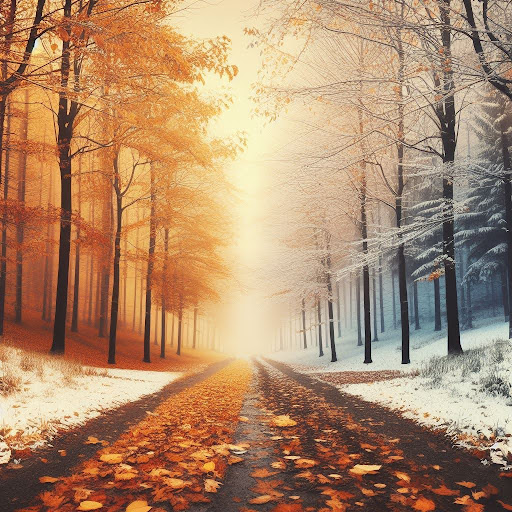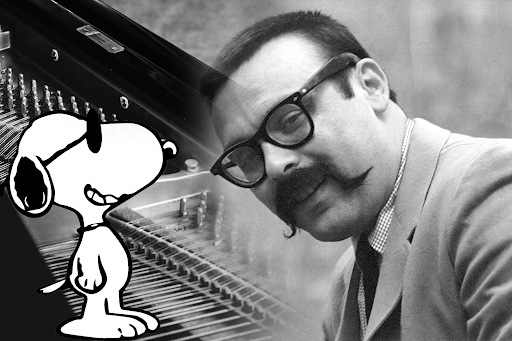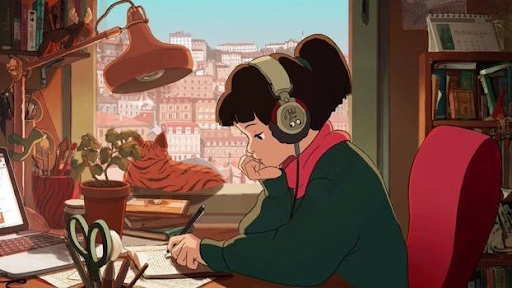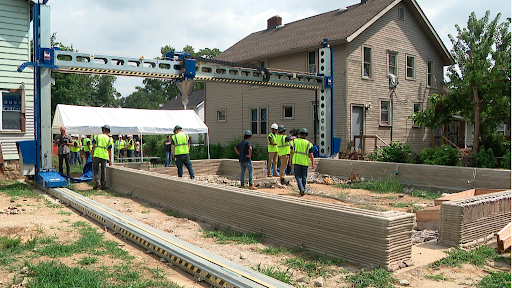TV Show Tuesday: Glee’s Highs and Lows
Glee superfan Lucy Stefani ’21 with her Glee and theatre-inspired laptop stickers.
Glee is hands down my favorite TV of all time. It follows a group of misfit show choir kids and their glee club director Mr. Shue as they navigate the ups and downs of love, acceptance, and growing up. Glee is a show that always seems to find me at just the right time. When I first discovered it in 8th grade, it filled me with joy and excitement during a time where I was in a bit of a funk. As I rewatched it this summer, Glee made me feel alive again. Watching Glee during Covid was like hanging out with friends. It made me laugh, cry, and remember the joy of performing during an isolating time. I can’t state enough how much this show means to me. That said, watching it now with a more critical eye, I’ve noticed things about the show that aren’t perfect. I will always love Glee, but there are aspects of the show that I wish had gone a little differently. So here are Glee’s 3 biggest highs and 3 biggest lows.
Lows
- The character of Rachel and the show’s lack of consequences
Rachel has always grated on my nerves since I first watched the show. She’s self-absorbed, rarely considers others’ feelings, and worst of all, makes the same mistakes over and over again and never seems to learn anything. When we are first introduced to her in season one, her intensity, arrogance, and cutthroat ambition are often played for laughs. It’s as if the show knows she’s not a likeable character, and the viewer feels like the writers are setting her up to have an arc that will turn her into a worthy protagonist. But somewhere along the way, they start excusing her behavior, sending the message that her ego and narcissism are okay. Time and time again, we see episodes about her diva-like nature and how her competitive drive ruins her relationships, yet she never changes. There were so many opportunities for her to finally learn her lesson — such as Sunshine’s arrival to the glee club, her failed NYADA audition, and Kurt beating her in the season 4 diva-off — yet the show refuses to let her fail or struggle.
In season 4, both Finn and Kurt are scrambling to figure out their lives after not getting into college, and they really grow as characters because of it. Rachel on the other hand — who forgot the words in her college audition whereas Kurt’s audition is one of his best performances of the series — gets into the school of her dreams and, within a year, lands her dream role on Broadway. None of these achievements feel deserved because she mostly wins, and when she fails at an audition she’s viewed with empathy, even while failing constantly in relationships; and she never grows as a person. A 2019 AV Club article astutely comments: “It was Rachel though, who is painted as the one who suffers the most.” It doesn’t matter what is going on with the other characters — whether it’s Kurt’s bullying arc, Quinn’s accident, or Sam’s homelessness — Rachel’s failed audition or breakup is always depicted as the most devastating aspect of any given episode. Every other character is pushed to the sidelines or used to comfort Rachel whenever she so much as gets a papercut. It gets incredibly frustrating to watch after a while, especially considering that Rachel’s struggles often pale in comparison to those of the other characters. While watching the show for the first time, I kept waiting for Rachel to finally learn her lesson, but alas, that day never came, and this trope taints the quality of certain episodes.
- Seasons 5 and 6
This one is not necessarily the show’s fault. About a month before they were set to start filming season 5, one of Glee’s lead actors, Cory Monteith, died tragically of a drug overdose at the age of 31. Aside from being a devastating loss for the entire cast and crew, Cory’s death meant big problems for the future direction of the show. The writers were planning to focus much of season 5 on Finn’s arc; and, with a month between his death and the start of filming, they had to think on their feet and replan the rest of the series. Season 5 is watchable.
There are some genuinely fun moments, like the last 7 episodes that focus on the whole gang living in New York together after graduation. But a lot of the season feels sitcom-y. There are very few overarching plotlines that carry throughout the first half of the season, aside from Marley and Jake’s relationship issues and Rachel and Kurt’s band (which feels really surface level and random). It almost feels like you could watch these episodes in any order and you wouldn’t be lost at all because almost every issue wraps itself up within an hour. The season also resorts to gimmicks and excessive campiness to try to hold onto its audience (look no further than the Christmas special and the puppet episode). Season 5 was certainly disappointing in comparison to past seasons, but season 6 has even less to offer.
Due to declining ratings, Fox only renewed Glee for a 13 episode farewell season. The limiting episode count I think is the biggest detriment to the quality of this season. There simply wasn’t enough time to develop these storylines in a natural way, especially since the season starts with almost every character at their lowest: Rachel coming off her failed sitcom, Blaine dropping out of college after his breakup with Kurt, and McKinley High under the dominion of Sue Silvester. Everyone returns to Lima to get their lives back on track, but there just isn’t enough time to restart the Glee club, make the audience care about all the new Glee kids they try to introduce, get Kurt and Blaine back together, and get Rachel back to Broadway. Yet the show tries. The result is a rushed mess filled with seemingly random appearances from the original cast and desperate attempts to recapture the magic of the earlier seasons, even going so far as to add a completely unnecessary flashback episode that is essentially just a rehash of the pilot. These seasons are definitely the worst of Glee; and it is a disappointing end to a show that I love so much.
3.The issue of representation
Glee prides itself on being a show that represents every race, identity, and prominent social issue of its time. Although, just because the show has these characters and storylines, doesn’t mean they’re always handled well. Many characters of color — such as Mercedes, Tina, and Mike for example (with Santana as perhaps the only exception) — are pushed to the sidelines. They rarely get plotines to themselves; and, when they do, they almost never address racial issues. One instance where they attempted to tackle racial issues was when Tina begins wearing blue eye contacts due to her struggles with not having many Asian role models in media. However, this plotline is wrapped up in about two scenes so the show can focus the rest of the episode on how Rachel is insecure about her nose. Often these characters of color are self aware stereotypes and seem only to support the white characters and their issues. Another representation issue came with the character of Artie, who is in a wheelchair yet played by an able-bodied actor. Many special needs organizations have spoken out against the show’s depiction of him as helpless rather than a strong, independent character. He frequently expresses how he wishes he could walk again rather than being an empowered role model for disabled viewers. I read some great articles about this that first called my attention to these issues, and I encourage any Glee fans to check them out. Overall, Glee made strides in representing diversity in terms of gender and sexual orientation, but they were not as successful in handling racial diversity and people with disabilities.
HIGHS
- The character of Kurt
Where do I even begin with this character? Kurt is a big part of the reason I love this show. He’s hilariously funny and sweet, but also sassy and strong when he needs to be. Chris Colfer brings so much of his own personality and humor to the role and manages to make all the viewers relate to him, even if they don’t share his experiences. In 2011, Colfer became one of Time’s 50 most influential people at the age of 20 for his portrayal of Kurt. That is how much of a cultural phenomenon Kurt is. Not only does he have impeccable style and some killer one liners, but he also gets some of the most emotional and compelling storylines compared to anyone on the show, revealed through his relationship with his dad as he navigates his coming out, his bullying issues, his relationship ups and downs with Blaine, to name a few. All are handled so beautifully and make him an even more likable character. Ryan Murphy, the show’s creator, spoke during the show’s run about how he didn’t want to make Kurt a victim. Rather, he wanted to show Kurt getting a happy ending to inspire all the kids out there who are just like Kurt. And Kurt certainly gets just that. There are so many Kurt moments that move me to tears — like the scene with his dad and Finn in their basement, Kurt’s confrontation with Karofsky in the locker room, and his dad’s health scare in season 2. Just as many scenes make me jump up and cheer for him — like his performance of “Not the Boy Next Door,” his first song with Blaine, and his kindness and eventual forgiveness of the bully who had threatened his life. I could go on about this character for ages, but in short, he is a constant symbol of determination in the face of adversity, kindness in the face of hatred, and acceptance in the face division.
- A High School Dramedy
“A high school dramedy” is the best way I can describe the genre of Glee. Any given episode of Glee has the potential to both make you cry your eyes out and laugh out loud multiple times. While this can lead to issues balancing the tone of the show, most of the time the writers and actors strike just the right balance between hilarity and drama. This tonal duality perfectly captures the ups and downs of the high school experience. The character of Santana Lopez is a perfect representation of the show’s balanced tone. She has some of the funniest lines through her expertly crafted roasts yet also has some of the most touching moments, like her scene with her Abuela in season 3. She can be used for comedic relief, but at the same time, gets the development and emotional depth she deserves. That is the epitome of Glee to me. It’s a silly comedy that still has deep, powerfully emotional scenes that make the audience fall in love with the characters.
- The music
Oh yeah, did I mention the show is a musical? Glee uses covers of popular songs to move the plot along and to develop key characters. At their worst, the songs feel shoehorned in and a little out of place. At their best, the songs evoke emotion and enhance the power of a moment. It’s way too hard for me to narrow down my favorite Glee musical performances (look no further than my four and a half hour long Glee spotify playlist), but some of the best are the competition numbers. The Glee club competes in three show choir competitions a year, and each episode featuring a competition is usually a season or midseason finale. These competition performances are iconic because they remind us, as the audience, just how far this club and these characters have come as high school performers. Competitions usually feature one ballad and one or two group numbers that have a triumphant feeling to them. The expression on the kids’ faces, the song choice, and the grand swooping camera angles all give off the vibe that, regardless of the results of the competition, these characters have won. They’ve not only triumphed as a team but also in their personal lives. Rewatching these episodes during quarantine made me yearn to get back up on stage because these numbers capture the excitement and pure joy of performing.
I could talk about this show for days, and I practically have — given the length of this article. As the show frequently emphasizes, “Glee, by its very definition, is about opening yourself up to joy.” The show didn’t always handle everything perfectly. There were certainly bumps along the road and aspects of the show I wish were different. But I love it for and in spite of its flaws. At the end of the day, Glee is a show about joy. The power of friendship, the magic of performing, the spirit of inclusion and acceptance — all of these come to mind when I think of Glee. This show meant so much to millions of kids when it came out, and it means so much to me today, especially during these uncertain times. I can always count on Glee to bring a smile to my face on a hard day. I cannot recommend this show enough. It truly changed the game for television.
Lucy Stefani ’21, Arts & Entertainment Editor
21lstefani@montroseschool.org

